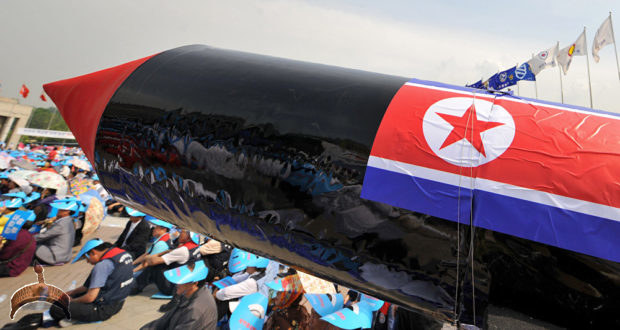A South Korean news outlet reports that the Democratic People’s Republic of Korea (DPRK) launched a ballistic missile.
“North Korea fired an unidentified missile from a site in the vicinity of Buckhang in Pyeongannam-do (South Pyeongan Province) early this morning,” according to a statement by the South Korea Joint Chiefs of Staff.
Multiple local media outlets are reporting that the missile exploded shortly after leaving the launch platform.
“We’re aware of the event,” the US Pacific Command (USPACOM) said.
The last time the DPRK tried to launch a missile was on April 16, but by all accounts it also failed.
The US has vowed in recent weeks that the era of strategic patience is over. On April 17, US Vice President Mike Pence said “we’re going to abandon the policy of strategic patience,” while adding that “our hope is that we can resolve this peaceably.”
After a lot of hype and confusion, the US Navy’s Carl Vinson and accompanying strike group have been headed to the Korean Peninsula in recent days. On Wednesday, the Vinson, two destroyers, a guided missile cruiser, were reportedly within “striking range” of North Korea “if called upon to do that,” US Adm. Harry Harris said.
The US has reportedly been seeking to strengthen sanctions levied against Pyongyang. But one wonders how much this “diplomatic” maneuver is being made in vain: back in 1991, the CIA knew that economic sanctions would not lead North Korea to stop developing its nuclear weapon arsenal.
“It is likely only a matter of time before North Korea develops the capability to strike the US mainland,” US Secretary of State Rex Tillerson said at a UN Security Council meeting on Friday. The threat of nuclear attack against Seoul and Tokyo is “real,” he added.
The Trump administration said on Friday evening that the White House has been briefed on North Korea’s latest missile test. “The administration is aware of the most recent North Korean missile test,” and “the president has been briefed,” the statement said. The missile never left North Korean territory and did not pose a threat to North America, USPACOM added.
 Ọmọ Oòduà Naija Gist | News From Nigeria | Entertainment gist Nigeria|Networking|News.. Visit for Nigeria breaking news , Nigerian Movies , Naija music , Jobs In Nigeria , Naija News , Nollywood, Gist and more
Ọmọ Oòduà Naija Gist | News From Nigeria | Entertainment gist Nigeria|Networking|News.. Visit for Nigeria breaking news , Nigerian Movies , Naija music , Jobs In Nigeria , Naija News , Nollywood, Gist and more








